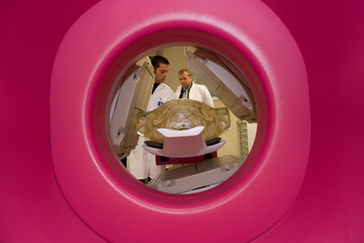Single-molecule FRET & correlative microscopy
The Dynamic Bioimaging Lab and the Advanced Optical Microscopy Centre at UHasselt are specialized in single-molecule Förster resonance energy transfer (FRET) and image correlation spectroscopy methods to study molecular interactions.

Single-molecule Förster resonance energy transfer
FRET measures the distance between two fluorescent probes to quantify molecular interactions, activity and much more.
We specialize in single molecule (sm)FRET. SmFRET is one of the few methods that can quantify molecular conformation and conformational dynamics simultaneously.
We characterize FRET dye pairs, continuously refine our FRET analysis methods, increase the accuracy/precision of structure measurements, and push the time scales of conformational dynamics that we can probe.
We apply smFRET to investigate a myriad of biological systems and pathways, where we provide dynamic insights no other research tool can provide!

Image correlation spectroscopy
With image correlation spectroscopy, intensity fluctuations in fluorescence images are analyzed in given regions of interest across image series. ICS provides information on protein mobility in a cell, protein interactions with other biomolecules and protein concentration in cells.
Image correlation spectroscopy helps understand the stoichiometry of proteins, and hence can be used to quantify protein aggregation or oligomerization. Since we use it in live cells, the data help us in understanding their role in disease pathology.
We study both membrane proteins and cytosolic proteins that are important from a neurological perspective. Image correlation spectropscy brings us closer to understanding protein behavior thereby aiding drug development to target diseases.
Fluorescence-based image correlation techniques

Raster Image Correlation Spectroscopy (RICS)
Analyze mobility and indirectly detect binding

Cross-Correlation RICS
Analyze co-diffusion of two proteins

Asymmetric motion and flow analysis
Analyze non-Brownian diffusion











